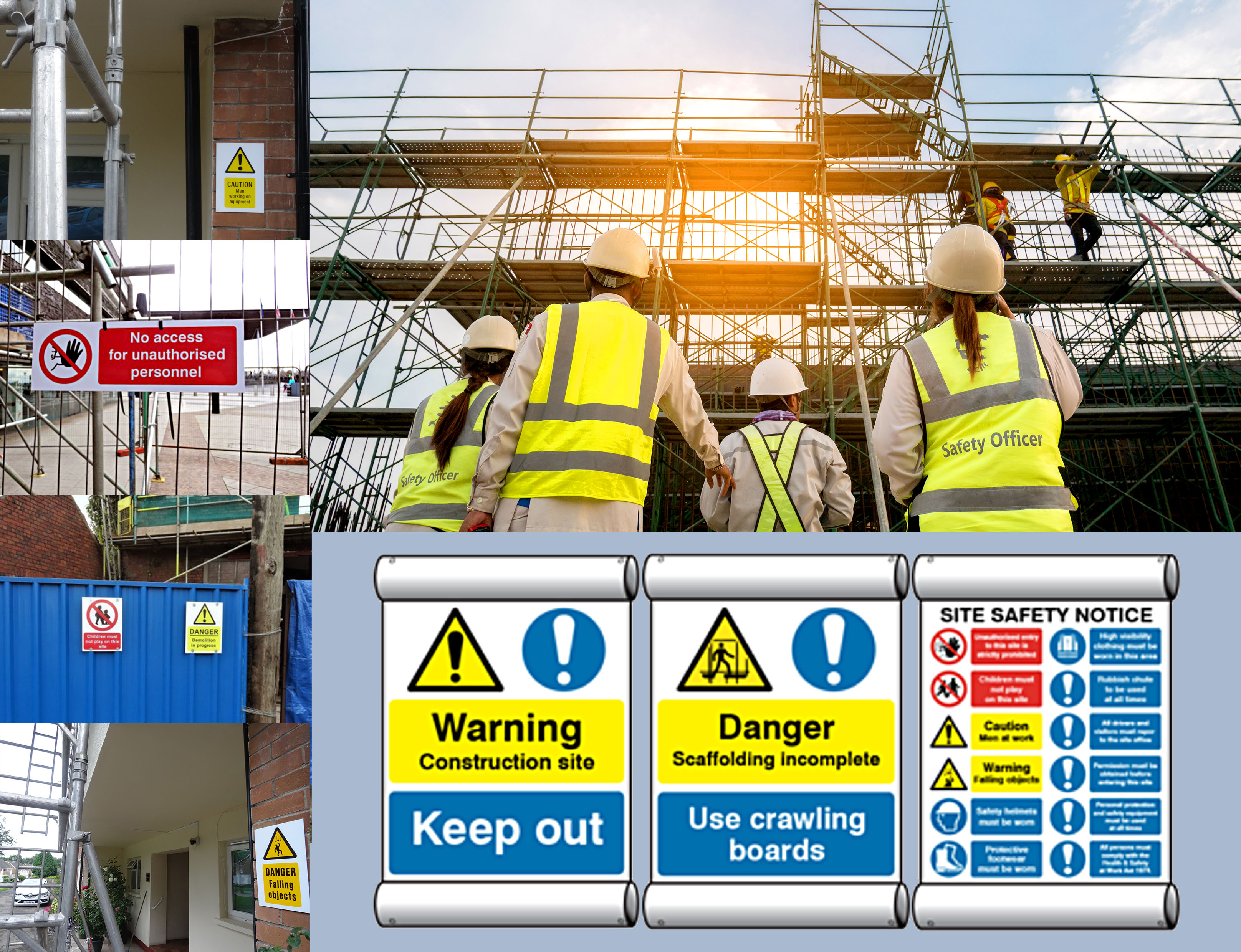
Scaffolding is an essential part of modern construction. The practice has been used as far back as ancient Greece, but in modern times, it is thankfully much safer than its origins.
These days, there are stringent regulations for constructing and dismantling scaffolding, as well as a list of very specific materials to be used.
There is also a range of signs, labels and other pieces of equipment to help with the organisation of scaffolding, such as scaffold safety banners. Scaffold safety banners display a range of health and safety guidance, helping to keep workers safe.
Discover all you need to know about scaffolding safety requirements and the role of scaffolding safety banners below.
Scaffold Regulations Safety Requirements
Safety scaffolding requirements can be broken up into three categories: design, supervision and inspection. There are regulations for each of these steps.
Scaffold Design
Under the Work at Height Regulations 2005, a scaffold must be erected and designed to a set standard. These standards state that all scaffolding must:
- Appease the tube guidance outlined in NASC Technical Guidance TG20.
- Have a bespoke design and calculation.
- Have adequate strength, rigidity and stability.
- Be constructed by a “competent person”.
Essentially, all scaffolding must use the correct materials, be created specifically for its use and by someone who is trained.
Scaffold Supervision
As we’ve mentioned, everyone involved in constructing scaffolding should be trained. However, as an additional safety measure, these trained people must be supervised by at least one other professional.
At a minimum, another professional must check every scaffold gang after it has been constructed. All stages of the scaffolding – from construction to dismantling – must be supervised by a trained individual.
Details on supervision and the regulations around it can be found via the Construction Industry Scaffolders Record Scheme (CIRS).
Scaffold Inspection
The inspection of scaffolding by the supervisor needs to be comprehensive. All scaffolding should be inspected:
- Before and after installation.
- Checked regularly, with no more than 7 days between inspections.
- Directly following circumstances that may impact the scaffolding (poor weather, high winds, slips, etc.)
The baseline of scaffold health and safety is checking. There must always be a process whereby scaffolding is consistently reviewed at all key stages.
What Are Scaffold Safety Banners?
Scaffold safety banners can help ensure the above safety measures are followed. In total, scaffold safety banners can:
- Display health and safety information.
- List requirements for PPE.
- List prohibited people.
You cannot underrate the importance of keeping staff informed through banners and notices, plus, at Label Source, you will be getting banners protected with PVC and high-quality metal eyelets.
Scaffold safety banners help you fulfil safety obligations, safeguard workers, and mitigate legal and financial liabilities. What’s more, they contribute to hazard awareness, helping employees navigate on-site hazards related to the scaffolding.
Safety scaffolding signs are paramount for reducing accidents. Whether notifying employees that scaffolding is incomplete or warning pedestrians to keep out of the construction zone, the right scaffold banners can save lives in extreme circumstances.
How to Stay Safe Using Scaffolding
When it comes to using scaffolding safely, there are scaffold requirements you should fulfil to ensure you’re engaging with it properly. These may include:
- Providing and/or undergoing proper training
- Wearing the correct PPE
- Using safety belts and lanyards while on the scaffolding
- Ensuring planking is secure
- Being aware of other workers both above and below you on the scaffolding
- Raising and lowering materials safely, by hoist, hand, or debris chute
- Not overloading the scaffold
- Being mindful of which parts of the scaffold should be stood on
Of course, one of the most important parts of scaffolding safety is ensuring everything is signposted correctly for ease of communication and understanding.
Browse Our Range
Our scaffold safety banner range is resistant to all types of weather, and ready for multiple uses without sacrificing quality. Browse the site safety notices available today.